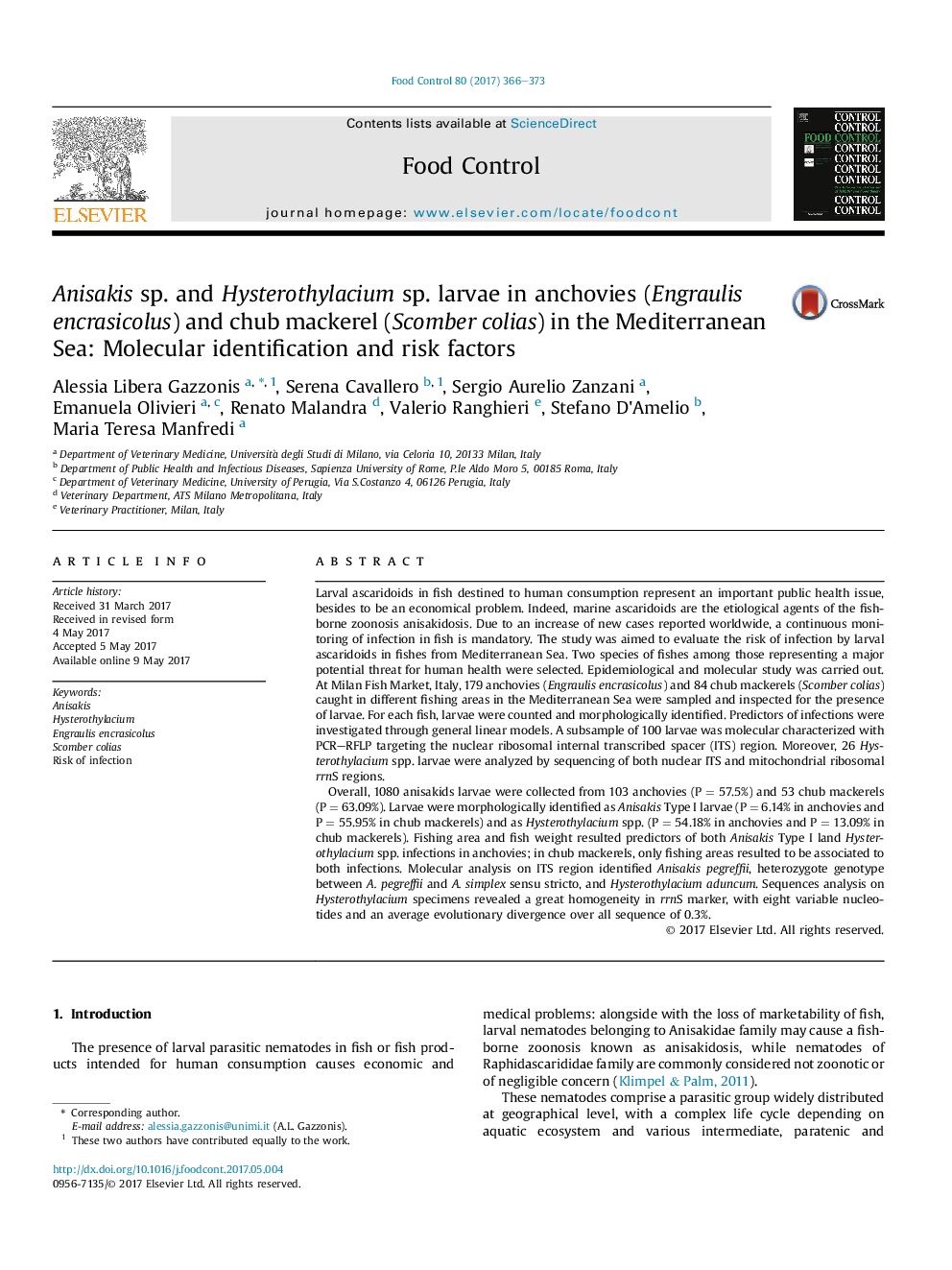| Article ID | Journal | Published Year | Pages | File Type |
|---|---|---|---|---|
| 5767264 | Food Control | 2017 | 8 Pages |
â¢Larval ascaridoids in anchovies and chub mackerels from Mediterranean Sea were investigated.â¢Anisakis Type I and Hysterothylacium spp. were identified in both fish.â¢Molecular analysis identified A. pegreffii, hybrid genotype (A. pegreffi/A. simplex s. s.) and H. aduncum.â¢Novel information on rrnS mitochondrial gene of H. aduncum was achieved.â¢Both fishes represented a sanitary risk for consumers.
Larval ascaridoids in fish destined to human consumption represent an important public health issue, besides to be an economical problem. Indeed, marine ascaridoids are the etiological agents of the fish-borne zoonosis anisakidosis. Due to an increase of new cases reported worldwide, a continuous monitoring of infection in fish is mandatory. The study was aimed to evaluate the risk of infection by larval ascaridoids in fishes from Mediterranean Sea. Two species of fishes among those representing a major potential threat for human health were selected. Epidemiological and molecular study was carried out. At Milan Fish Market, Italy, 179 anchovies (Engraulis encrasicolus) and 84 chub mackerels (Scomber colias) caught in different fishing areas in the Mediterranean Sea were sampled and inspected for the presence of larvae. For each fish, larvae were counted and morphologically identified. Predictors of infections were investigated through general linear models. A subsample of 100 larvae was molecular characterized with PCR-RFLP targeting the nuclear ribosomal internal transcribed spacer (ITS) region. Moreover, 26 Hysterothylacium spp. larvae were analyzed by sequencing of both nuclear ITS and mitochondrial ribosomal rrnS regions.Overall, 1080 anisakids larvae were collected from 103 anchovies (P = 57.5%) and 53 chub mackerels (P = 63.09%). Larvae were morphologically identified as Anisakis Type I larvae (P = 6.14% in anchovies and P = 55.95% in chub mackerels) and as Hysterothylacium spp. (P = 54.18% in anchovies and P = 13.09% in chub mackerels). Fishing area and fish weight resulted predictors of both Anisakis Type I land Hysterothylacium spp. infections in anchovies; in chub mackerels, only fishing areas resulted to be associated to both infections. Molecular analysis on ITS region identified Anisakis pegreffii, heterozygote genotype between A. pegreffii and A. simplex sensu stricto, and Hysterothylacium aduncum. Sequences analysis on Hysterothylacium specimens revealed a great homogeneity in rrnS marker, with eight variable nucleotides and an average evolutionary divergence over all sequence of 0.3%.
